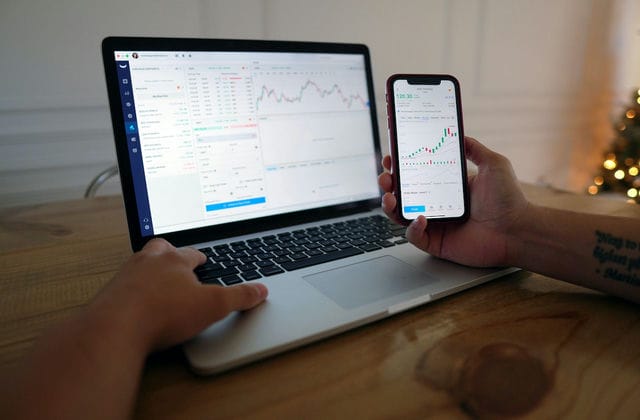I. Definition of an index
A stock index is an index of stock prices. It is an indicative figure compiled by a stock exchange or financial services institution to show the movement of the stock market. As stock prices fluctuate, investors are inevitably exposed to market price risk. While it is easy for investors to understand the price movements of a specific stock, it is not easy and tedious to understand the price movements of multiple stocks one by one. To accommodate this situation and need, some financial services institutions have taken advantage of their business knowledge and familiarity with the market to compile stock price indices, which are publicly released as indicators of market price movements. Investors can then test the effectiveness of their investments and use them to predict the movements of the stock market. At the same time, the press, company owners and even political leaders also use this as a reference indicator to observe and predict the socio-political and economic development situation.

The stock index is an average of the price movements of the stock market. The stock index is usually compiled based on a certain month in a certain year, using the stock price of this base period as 100, and comparing the stock price of subsequent periods with the base period price to calculate the percentage increase or decrease, which is the stock index for that period. Investors can judge the trend of stock price movements based on the rise and fall of the index. In order to reflect stock market movements to investors in real time, almost all stock markets publish stock price indices at the same time as the stock price changes.
Two methods of calculation are used: The arithmetic average and the weighted average.
The arithmetic average method: The average of stock prices is calculated by adding up the prices of the sampled stocks and dividing them by the number of sampled stock types.
The formula is as follows.
Arithmetic mean of stock prices = (sum of stock prices per share of sampled stocks) ÷ (number of sampled stock types)
the calculated average is then compared to the base period average derived from the same method and then the percentage is sought to derive the stock price index for the current period, i.e.
Stock price index = (arithmetic average of share prices for the current period) ÷ (arithmetic average of share prices for the base period) x 100%
the weighted average method: Multiply the price of each stock sampled in the current period by the sum of the number of issues in the current period as the numerator and the price of each stock sampled in the base period by the sum of the number of issues in the base period as the denominator, and the resulting percentage is the stock price index for the current period, i.e.: Stock price index = [∑ (price of each stock sampled in the current period x number of issues)] ÷ [∑ (price of each stock sampled in the base period x number of issues) ] x 100%

ii. Equity indices and investment returns
An equity index is a positive proportional function of the market value of an index portfolio, and its increase or decrease is the rate of return of this portfolio. However, in the calculation of the stock index, the transaction costs of the stock are not deducted, so the actual return of the stockholder will be less than the rise and fall of the stock index, the rise and fall of the stock index is the maximum rate of return on investment of the index portfolio.
The stock market often circulates a maxim, called the bull earns and the bear loses, that is to say, the bull market in the shareholder profit, in the bear market loss, but if the shareholder as a whole to analyze the investment, the bull market in the shareholder may not be able to win.
1. If a bull market is reversible, the shareholder will only lose money and not gain.
2.Even in a bull market, a shareholder may not necessarily make a profit.
3. If a bull market makes the share price deviate from its investment value, the shareholder's profit is virtual, and some of the shareholder's profit is based on the loss of others.

Iv. Some of the world's most famous stock indices
the following are some common stock price indices.
1. Dow jones stock price average index
Also known as the Dow jones, it is calculated using the unweighted arithmetic average method. Dow indices include: Dow industrial average, composed of the average stock prices of 30 industrial companies; Dow jones utilities average, composed of the average stock prices of 15 utility companies; Dow jones transportation average, composed of the average stock prices of 20 transportation companies; Dow jones 65 stock price averages, composed of the above-mentioned 65 companies in the industrial, transportation and utility stock prices are mixed. The Dow jones stock price average is based on October 1, 1928, and is published every 30 minutes during trading hours on the New York stock exchange, using the ratio of the arithmetic average of stock prices at that time to the base period, and is the most quoted stock index in the western press.
2. Standard & poor's index
The S&P index was first compiled and published by standard & poor's in 1923, when two main indices were compiled, one consisting of 90 stocks published once a day and the other consisting of 480 stocks published once a month. The S&P index is based on the 1941-1941 index.
The S&P index is based on the years 1941-1943 and is expressed as a percentage by multiplying the price of each stock by the sum of the number of stocks issued as the numerator and dividing the base period share price by the sum of the number of stocks issued as the denominator. As the index is calculated based on the prices of the vast majority of common stocks listed on the New York stock exchange, it is flexible enough to adjust for price movements caused by subscriptions to new equity, share dividends and stock splits, etc. The index values are more accurate and have good continuity, so it tends to be more representative than the Dow jones index.
3. Hang Seng index
The Hang Seng index is one of the oldest stock price indices in Hongkong, and was published by the Hang Seng bank of Hongkong on 24 November 1969.
The current Hang Seng index is based on a base period of 31.7.96 and is calculated on the basis of 33 representative stock prices of stocks listed in Hongkong in various sectors. Since the total value of the stocks of these 33 companies accounts for over 65% of the total value of all stocks listed in Hongkong, the Hang Seng index is currently the most authoritative and representative stock price index in the Hongkong stock market.
4. Nikkei index
The Nikkei stock price index is a stock price index for the Japanese stock market. It is obtained by dividing the sum of nearly 500 stock prices by a constant. Due to the special position of the Japanese economy in the world economy, the Nikkei index has become increasingly important to the world financial markets.
5. Financial times index
The stocks sampled for the financial times index are selected from the stocks of the major 100 large companies listed on the international stock exchange in London, UK, and are updated at a frequency of once a minute. The index is calculated using the arithmetic weighting method




























